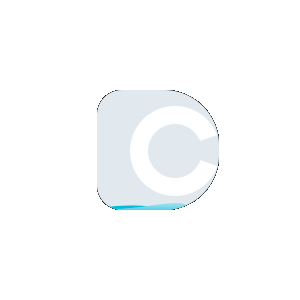Cloaking Checker
For those who are unaware with the word 'cloaking' in the high-tech world, here is a basic definition. Cloaking is when a website is programmed in order to provide different text to individuals than that presented to Google crawlers. Cloaking Checker is a highly excellent SEO tool that makes it easy for webmasters to see if a website is making use of this technique.
This effort to distort ranking by modifying the content presented is unlawful and is called 'black hat' SEO approach. Webmasters who employ Search Engine Optimization techniques to build their sites and indexed them through search engines don't become familiar with the tools that an SEO uses. The webmaster may be happy to see the website scoring well on the rankings. What he/she does not know is that if a cloaking technique has been utilized. The search engines will ultimately discover it and blacklist the website. A few instances of cloaking are:
- Serving an HTML webpage to search engines while presenting a different page to viewers.
- Inserting text within a page while the search engine robot requests it and not to humanoid visitors.
Cloaking is done to fool search engine robot with the intention of gaining a better ranking in search engines. It tries to mislead robot into believing that the page it's crawling is what the individual sees, but it is not. This is indicated as 'spamdexing' technique or poisoning. It is an attempt to trick a search engine into providing the cloaking website a greater ranking than it deserves.
Dupli Checker’s cloaking tester tool detects whether a site utilizes "cloaking," a server technique that a few sites use to try to fool search engines into presenting rankings the website pages do not ask for. Cloaking includes showing one version of a page to individuals and a different version, generally stuffed with other keywords, to search engine spiders. It is a stealth technique that Google and other search engines consider misleading, as it tries to bias spiders into ranking the page excessively higher or for a different keyword span. We firmly discourage utilizing this kind of technique as it is spam, and if found out, could lead your site to be penalized in search engine rankings.
Enter your website URL or the URL of a rival's webpage with the intention of seeing whether cloaking is being engaged, either unintentionally or intentionally.
A few websites use immoral techniques called as “cloaking” to fool search engines, and they are provided the rankings far from what they actually deserve. This is a kind of deception, and while detected, your website will face a consistent penalty such as declining in search engine rankings. These websites utilize spiders or crawlers that enable search engines to see those websites as different from what they actually are.
The ultimate question is how black hat SEO performs cloaking? What are there two versions of content on a website one for viewers and one for search engines robot? On Apache servers, there is a module known as 'mod_rewrite.' This module helps Search Engine Optimizers and website owners to apply cloaking practice in the .htaccess file. Website owners and Search Engine Optimizers gather a list of crawlers IP addresses. While mod_rewrite detects that a search engine's robot or crawler is requesting for website content, it presents a 'cloaking' version. While a typical visitor lands on the website and views it, the standard web contents are displayed.
Webmasters and SEOs who wish to involve in cloaking make use of AdWords cloaking script or PHP URL cloaking script or URL cloaking script.
Invisible Text is one of the most usual practices utilized in cloaking. While website owners follow this practice, they overstuff content with invisible keywords that are not detectable by the human eye. It is just like writing a content page and writing words in it with hidden ink. Now any reader does not get the invisible text. Though, with a special light, you can see invisible words. It is nearly the similar technique utilized by webmasters.
The typical website visitor cannot see invisible keywords, content items, and tags but the search engine can. The crawler reads the whole content and bases its ranking on it.
Cloaking Emails: This approach is utilized when emails are sent to multiple or a single recipient, and the sender name are hidden. The recipient receives the email but is unfamiliar with who sent it.
HTML Rich Websites: It is a highly proficient SEO practice to have a higher 'Text to HTML ratio.' It indicates that your site should have more content in comparison with HTML tags. But should a website comprise of short posts or texts, the ratio to text to HTML will be lower?
There are a few websites which have been established under a flash. Flash is not allowed as per guidelines of Search Engine Optimization. Under such sort of situation webmasters instead of rewriting everything in simple HTML, they produce highly rich website content offered to search engines robots.
It is a common practice in Search Engine Optimization world that crawlers do not scan images. Thus webmasters believe they can utilize cloaking and put keywords on the website to gain ranking by search engines.
In order to use cloaking checker go to Dupli Checker and choose our best cloaking software. Scroll down icons, and you will see an icon for cloak checker. Click on the icon and enter URL of the website to be checked. Click on 'cloaking check' button, and it will test URL and if it detects or doesn’t detect cloaking it will appear it in the results.
If you find cloaking on your website, then you should worry as your website will get banned by search engines. After a website gets banned, it's nearly impossible to reclaim any credibility with search engines. Should you detect cloaking on a rivals website, don’t get worried. Search engines will detect it and penalize the website.
 Plagiarism Plans
Plagiarism Plans  Paraphrasing Plans
Paraphrasing Plans  Reverse Image Search
Reverse Image Search 


























